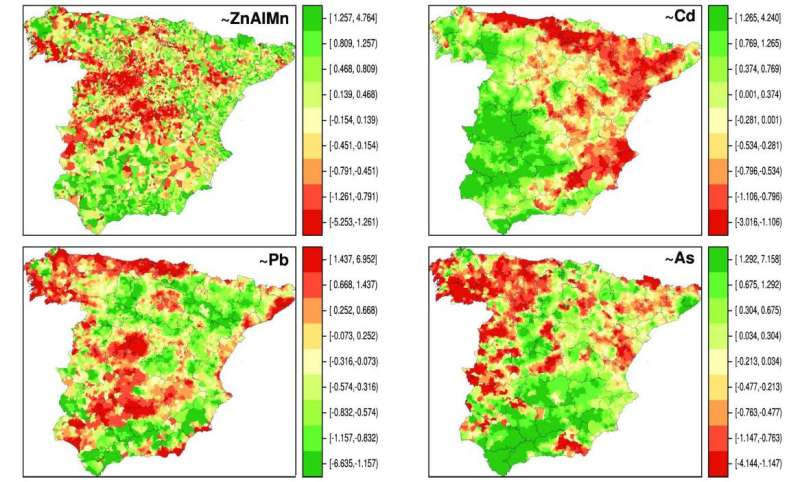A study links soil metals with cancer mortality

Spanish epidemiologists and geologists have found associations between esophageal cancer and soils where lead is abundant. Lung cancer has been associated with high copper content in soil; brain tumors are linked with areas rich in arsenic, and bladder cancer is associated with high cadmium levels. These statistical links do not indicate that there is a cause-effect relationship between soil type and cancer, but they suggest that the influence of metals on the geographical distribution of tumors should be analyzed.
The risk of dying from cancer is not the same in all geographic regions. There are many factors that influence the development of cancer, including the type of soil, since it can harbor heavy metals and semimetals that are carcinogenic for humans. Chronic exposure to these toxic elements, which enter the body via the food chain, could increase the frequency of certain tumors in some territories.
In this context, researchers from the National Epidemiology Center of the Carlos III Health Institute (ISCIII) and the Geological and Mining Institute of Spain (IGME) have jointly assessed the possible statistical association between the concentrations of heavy metals in the soil and mortality by different cancer types. The results have been published in the open access journals Environmental Geochemistry and Health and Environmental Science and Pollution Research International.
The data was extracted from Spain's Geochemical Atlas, published by the IGME in 2012, as well as from a database with 861,440 deaths from 27 cancer types that occurred in almost 8,000 Spanish municipalities between 1999 and 2008. The data can be extrapolated to the present because the geochemical composition of the soil is stable and the mortality patterns for disease usually do not vary.
The authors have crossed the information of the type of soil and the geographic distribution of the tumors, applying statistical analyses and taking into account the presence of local polluting foci or socio-demographic variables that could interfere in the results. They have found increased mortality in both genders from esophageal cancer in areas with higher concentrations of lead, and lung cancer in areas with high copper levels, among other correlations.
"We have also detected that the highest levels of cadmium, lead, zinc, manganese and copper concentrations in the soil are statistically associated with a higher mortality due to cancers of the digestive system in men," explains Pablo Fernández, ISCIII researcher and co-author of the paper, "and in the case of women, a higher mortality from brain cancer in those areas with more cadmium content."
The results also show a relationship between soils with more cadmium and higher mortality from bladder cancer; as well as areas with high concentrations of arsenic and more cases of death from brain tumors. "This research suggests that the geochemical composition of the soil, especially its metals, could be influencing the spatial distribution and mortality patterns of cancer in Spain, regardless of the socio-demographic context," says Fernández. "The great contribution of this work to environmental epidemiology and public health in general. However, although it is plausible that the contents of toxic elements in the soil, even if they are very small, may be a component in the cancer etiology, the results must be interpreted with great caution, since the relationships found do not allow us to conclude that there is a cause-effect relationship. Our study does not have individual exposure data or information about other very important factors in the origin of cancer, such as tobacco, alcohol consumption or obesity."
Co-author Gonzalo López-Abente says, "The conclusions move in the field of hypotheses and statistical associations, which will have to be confirmed with future analyses to check whether the composition of the soil itself has its counterpart in the biological markers of humans. In any case, the results are plausible and we could be facing one more component of the cancer etiology."
More information: Gonzalo López-Abente et al. Compositional analysis of topsoil metals and its associations with cancer mortality using spatial misaligned data, Environmental Geochemistry and Health (2017). DOI: 10.1007/s10653-016-9904-3
Olivier Núñez et al. Association between heavy metal and metalloid levels in topsoil and cancer mortality in Spain, Environmental Science and Pollution Research (2017). DOI: 10.1007/s11356-017-8418-6














